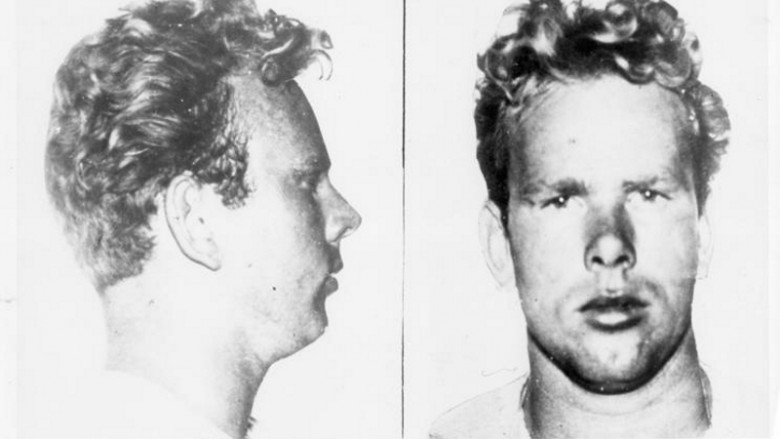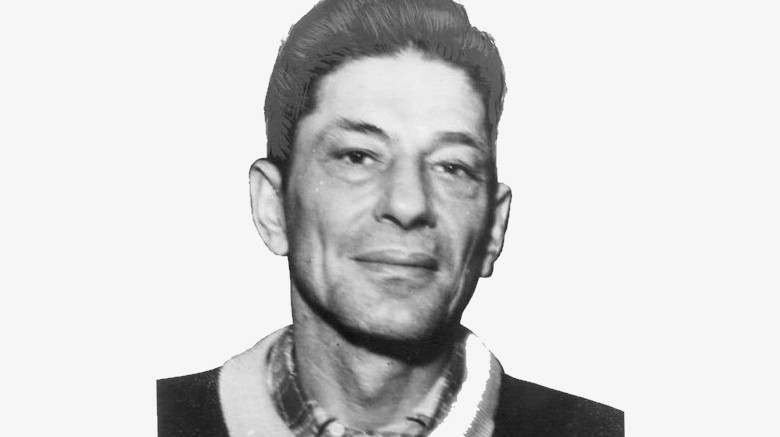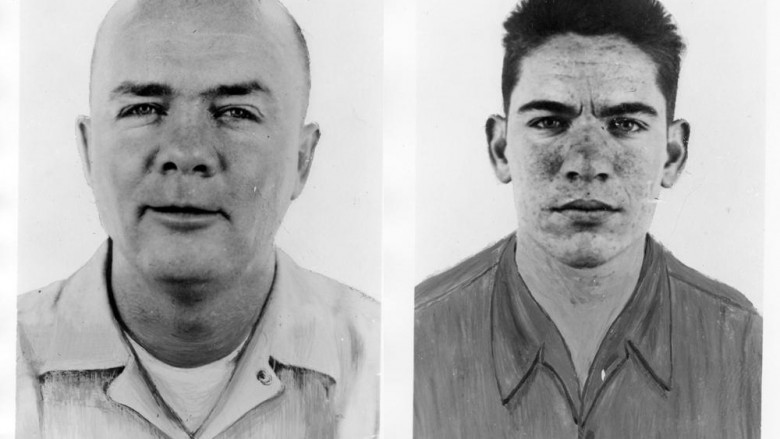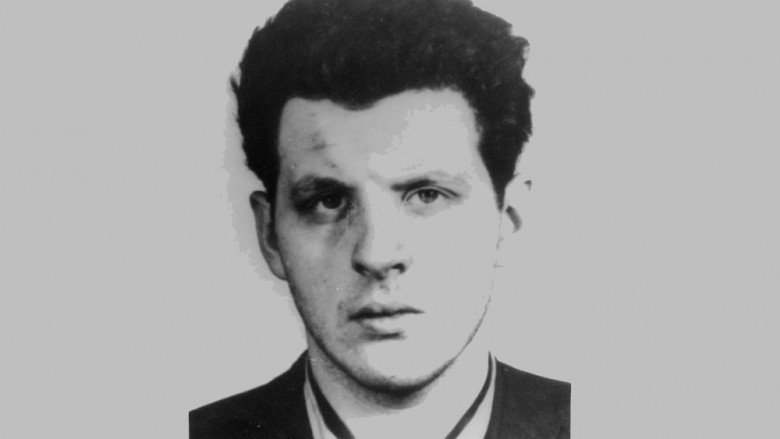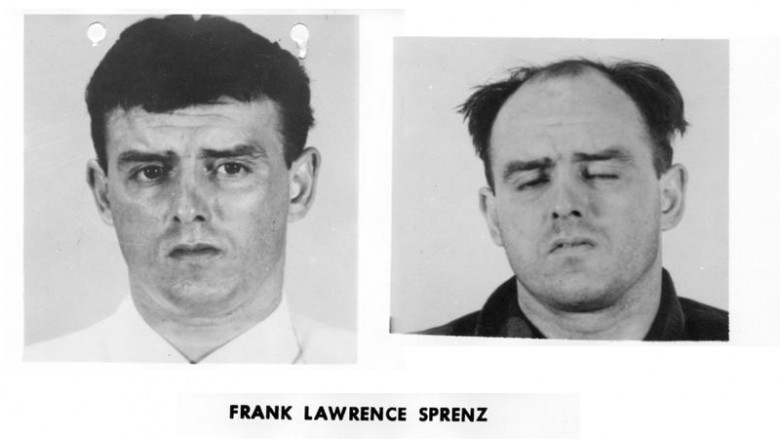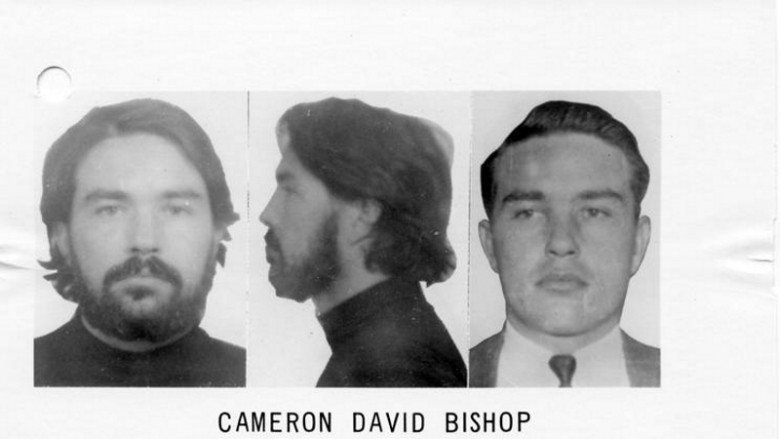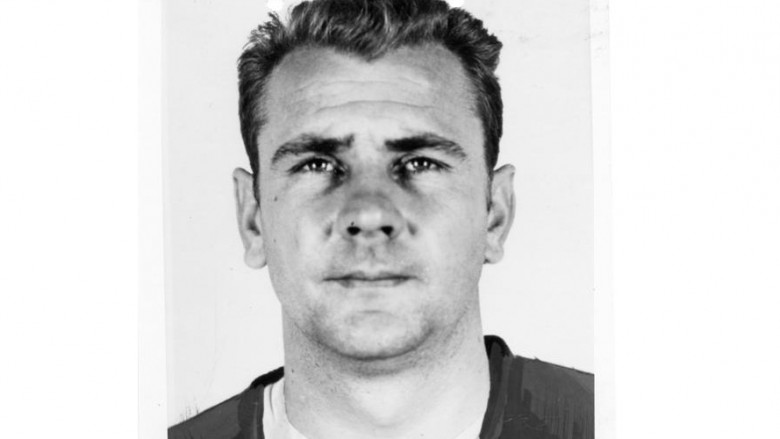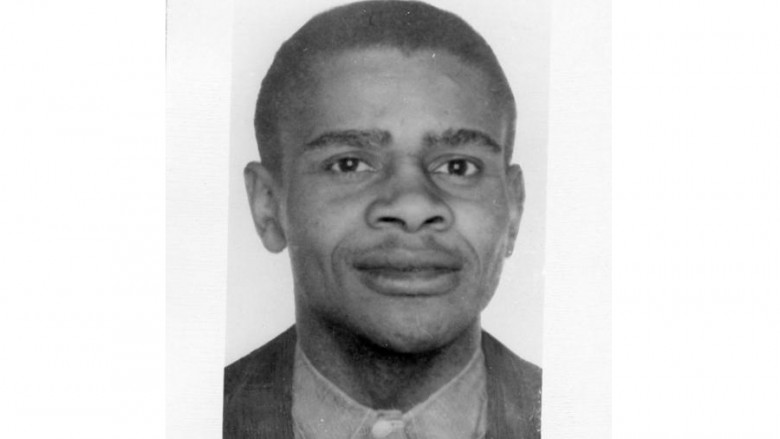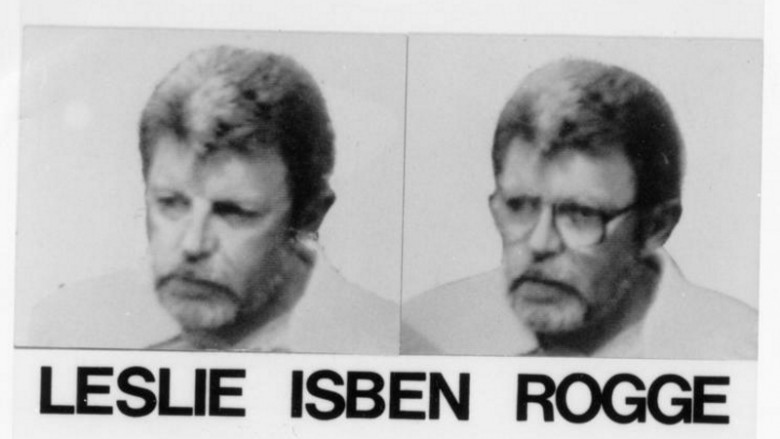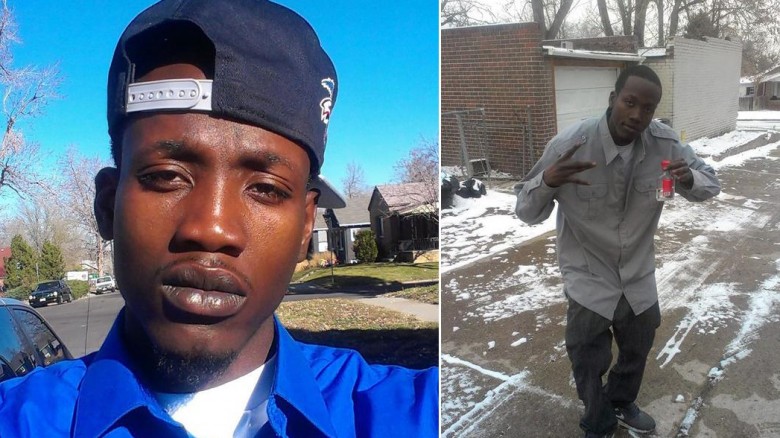The Craziest Crimes That Landed People On The Most Wanted List
Since its inception in 1950, the FBI's 10 Most Wanted list has helped nab countless thugs. While many of the honored spots go to some downright despicable desperadoes, butchers, and sickos, some fugitives landed on the FBI's Most Wanted list for impressively clever, truly ridiculous, or downright kooky crimes.
Fugitive check bouncer gains 60 pounds
Daniel O'Connor transitioned from happy-go-lucky army deserter into a full-fledged life of crime, trying his luck as a Canuck after going AWOL. Following a stint in a Canadian jail around 1948, he fled to the United States. With family in tow, he cut a swath across British Columbia, Oregon, Montana, and North Dakota, bouncing rubber checks across the Pacific Northwest.
Eventually, O'Connor was pinched for transporting stolen goods across state lines, making the Most Wanted list on April 11, 1955. His criminal career may have been prolific, but his attempts to hide in plain sight were even more impressive. Picking the most unassuming assumed name, Arthur Nelson, he also added some brand-new ink to his left arm—although how that helped him fit in exactly, aside from misidentification purposes, is a mystery—as well as cropping his hair close and dying it red. He also grew out a thick, hipster-chic new 'stache and bulked out Matthew McConaughey-style, adding an extra 60 pounds.
Despite arousing the suspicions of the neighborhood, who always felt there was something "not right" about the shifty new chubby redhead next door, he evaded capture for three years. All of his body mods amounted to nothing, though, because he couldn't modify his mind. Nelson née-O'Conner got fingerprinted after swiping a $15 dollar "kiddie trailer." As a result, the feds picked up his trail and apprehended him on December 26, 1955.
Ernest gets listed, twice
For someone named after sincerity, Ernest Tait certainly wasn't forthright about much, aside from crime. He was such a dedicated criminal that he wound up on the FBI's 10 Most Wanted list twice. The first time around, his 1951 April Fools' Day safe-crack tuned deadly serious, when he and his partner were caught red-handed in New Castle, Indiana. After a shoot-out with the cops killed his colleague Richard Schmidt, Tait left the state (also leaving a kneecap in a local police officer's crotch).
He discovered his elevated status while snacking on some fried chicken at a local establishment in Coral Gables, Florida. Apparently, his supper didn't seem quite as palatable once he caught his mugshot in the crime blotter of the local newspaper. After a few handy tips, including one from the restaurateur—who caught his picture in the very same paper Ernest had just read—the FBI zeroed in on him, using his love of automobiles against him and catching him with his pants down, er, his car up in the auto shop.
Tait's second go-around on the infamous list found him back to his same old behavior. Rather than considering more legit options, the 6-foot Midwesterner apparently used his time in prison to craft up some more hair-brained schemes. This time, the cops busted him after he broke into a bottling plant in Indiana—looking to pop the top another safe rather than a cool, refreshing beverage. Preferring to jump bail than to pay it, he landed back on The List. The feds caught up to old top-ten-twofer Tait in his car, hauling him back to the Hoosier State to face burglary charges.
A cross-dressing bandit and a honeymoon killer
Sometimes, even the most gender-bending disguises fall short, thanks to the memory of a few keen witnesses and a lot of rigorous police work. In the case of serial bank robber Ralph Dwayne Owen, his disguise often included dressing up as a woman during his stick-em-ups to confound the cops. The long-haired hot-rodder would've gotten away with it too, if it hadn't been for an eagle-eyed bank manager, who picked him out of a lineup. Then he and his on-again, off-again criminal compadre Charles Lorin Gove buddied-up yet again inside a medical prison in California—this time, to escape.
They cracked open a metal-reinforced prison window and snipped through three chain-link fences, relieving a pair of deputies of their weapons along the way. Now on the lam, the bandits got up to their same old shenanigans, knocking over a dude ranch in Napa Valley and a couple of banks in Kentucky, before splitting up soon after. Now solo, Gove held up a bank in Missouri in January and headed to the Big Easy. On February 16 of 1966, the FBI added Gove and Owen to their Most Wanted list. Gove was arrested that same day, while raging it up on Bourbon Street during Mardi Gras.
Owen, on the other hand, managed to evade capture longer, until his former partner was snagged and rolled over on him. Now calling himself "Tommy Harthun," Owen tied the knot about a week before the feds raided his Kansas City duplex in March. So much for newlywed bliss.
Robbing a vault with an anti-tank gun
Overkill was Joel Singer's middle name. The formerly smalltime, Montreal-born crook dreamed big, plotting a brutal heist with his uncle. Together, they set out to crack a Brink's Security vault in Syracuse, New York—no meager task. However, they had a little help from some big guns, literally. During the wee hours of October 25, 1965, the diabolical dyad used an assortment of accouterments to pop the treasury open, including drills, blowtorches, nitroglycerin, and most impressively, a 20mm antitank gun.
Where in the world did they get such a massive thing? Ironically, the FBI themselves were following the purchase of the monstrous Finnish weapon, presuming it was part of a terrorist plot (they were close). Singer bought the gun from an Alexandria, Virginia, arms manufacturer, shipping it to several cities, until it wound up in a Montreal warehouse. There, the would-be vault-popper—in a legitimately clever maneuver—stole it from himself.
Blowing the cash crypt wide open, the pair walked off with $423,000, roughly $3,324,000 in modern money, nonchalantly ditching the antitank weapon in the New York Harbor. Singer's uncle, however, was busted shortly after and unraveled the elaborate plot to the feds. Singer hit the FBI's Most Wanted list on November 1, 1965, before a cooperative FBI and Canadian operation brought him to justice 10 days later. In the long run, though, the task force only recovered a scant $188 of the stolen loot, and the robbery went down as one of the most brazen and costly crack jobs of the '60s. Nice shooting, Quebecois!
The robber who escaped via stolen plane
Frank Sprenz enjoyed an unusual if crime-ridden life. Like many youths living through the Great Depression, he joined the army at 15 to fight in World War II—although some theorize it was also a great way to escape punishment (seeing as his first arrest came at the tender age 11, for throwing rocks at someone). His time in the service didn't build his character, though, as he later began his crime spree in earnest, robbing a bar then winding up behind bars. Sprenz's real claim to fame, though, came after his infamous escape from Summit County Jail in his hometown of Akron, Ohio.
In 1958, he used a hunk of scrap metal to craft a skeleton key for his cell. Slipping out, he released four of his cohorts along the way. The bulk of the escapees were nabbed immediately, but Sprenz remained on the lam for over a year. The fugitive even winged into Baltimore, taxiing his stolen pontoon plane, tying it off in the harbor, and ordering a drink before his brash entrance attracted too much attention. He earned his nickname "the Flying Bank Robber" after robbing a bank in Hamilton, Ohio, flying off in a stolen plane with almost $30,000.
During his peak of notoriety, the feds bumped Sprenz to number one on the Most Wanted list, with director J. Edgar Hoover even spearheading the manhunt. His high-flying status ended after he purchased a plane in North Dakota with ill-gotten gains and winged it to Cozumel, Mexico. Shortly after his arrival, he crashed his plane and was seized by the authorities and returned to the States.
Sprenz served several years in the infamous Alcatraz, having the distinction of being the final inmate transferred from "the Rock" before its closure in 1963. Despite his intellect—Sprenz studied calculus and engineering in prison, as well as drawing cartoons and painting—the con could never keep his nose clean and died in prison in 2016.
The activist from Students for a Democratic Society
Founded on the tenets of free speech and freedom of expression, the United States enjoys a long history of radical activity. Some activists, such as Martin Luther King Jr. or Susan B. Anthony, peacefully advanced the progression of human society. Others, such as Cameron David Bishop, only managed to land themselves in a heap of trouble.
The first radical added to the FBI's 10 Most Wanted list, Bishop was a member of Students for a Democratic Society (SDS) who objected to the war in Vietnam. He was first pinched for "burglary" during a protest held at on the Colorado State University campus. His low-level activism, however, escalated roughly a year later, when he and several compatriots took out four utility towers that provided power to several Colorado weapons manufacturing plants. Added to the list in 1969, Bishop was only the second person ever charged under the antiquated Federal Sabotage Act, a set of post–World War II state-of-emergency laws still on the books. The radical remained free until March 1975, when he was captured in East Greenwich, Rhode Island, along with a carload of "armed men."
He was charged and sentenced to seven years federal prison. His conviction was overturned, though, on appeal in 1978.
Throwing hams at police
Over the years, lowlifes have used all sorts of treachery to trip up officers of the law. Tennessee-born bank robber Kenneth Ray Lawson was no different, spending half his life either on the run from the law or in jail. However, his early days offered up one particularly curious act of evasion. While his previous sentence, for heisting a hardware store, was still under appeal, Lawson fell back on his bad old habits and held up a Greenville, Tennessee, grocery store. To escape the police, he hurled hams at them, an act that earned him a felonious assault charge in addition to his robbery collar, as well as an extended stay in Brushy Mountain Prison.
His tactics may have been peculiar, but it was his Harry Houdini acts that called down the federal thunder. After his first escape attempt failed, Lawson riled-up the rabble at Brushy Mountain and used the subsequent riot to hightail it from the penitentiary, along with four other inmates. While his collaborators were rounded up, he stayed one step ahead of the feds until he hit the list in January 1960. They hunted him down and detained him in Mexico City—so much for the run-for-the-border myth—before bringing him back to Tennessee to face justice.
Lawson was described by Kentucky Marshal Roger Daniel as "a very smart guy" who couldn't figure out how to "use his intelligence on the outside." As such, he began a secondary criminal career as a safe-cracker in the mid-1960s, later getting nabbed in Texas for fraud and Kentucky for trafficking nose candy. Thanks to some tattoo removal and redhead makeover, he evaded capture for a few more years but now resides in a Kentucky penitentiary.
The bank robber who just kept failing
History records a handful of bumbling bank robbers and inept offenders, but there are always crooks who seem a little extra-south of luck. One of those fortuneless bumblers was George Edward Blue. An overall sloppy bank robber, Blue, like many criminals, just couldn't catch a break. The targets of his illicit activities rarely yielded any major hauls, and the authorities always seemed to get ahead of him before he could get very far.
Not long after being paroled for a previous heist conviction, Blue finally poached a decent pile, making off with roughly $5,600 from a bank in Evansville, Indiana, in 1969. He tried his luck again at an Atwood, Indiana, bank. His latest score was fairly minor, but his two recent robberies, combined with a good old-fashioned parole violation, won him a spot in the vaunted Top Ten. Eight short days later, the feds caught up to Blue at a bus terminal in Chicago, where he was waiting on a Greyhound. If that wasn't bad enough, his traveling companion, Mary Ann Downs, was a "material witness" to the hold-up in Atwood.
Blue's unfortunate criminal streak is further proof that crime doesn't pay much, aside from prison bonds.
Caught through the Internet
Leslie Rogge remains unrepentant, self-deprecating, and self-aggrandizing. Just read his tell-all book Wanted: Gentleman Bank Robber. Yet after stealing loot from at least 30 banks, nabbing roughly $2 million from "the man," and making the FBI's Ten Most Wanted List, he was brought down by the ultimate enemy of the modern outlaw: the Internet.
Rogge's delinquency began at 13 when he ripped off a car or two and nabbed his pop's credit cards, before being shunted into the Navy by a judge. He later made a pretty penny swapping stolen Cadillacs before setting his sights on a more dangerous game: bank heists. Knocking off several cash-keepers, he often used two getaway cars to elude capture. Rogge then caught airtime on America's Most Wanted, as well as primetime on the FBI's list in 1990, before he made a run to Antigua, Guatemala—the landlocked country, figured the salty seadog, would be the perfect hideout for him.
Rogge went by "Bill Young" and posed as an expat handyman. But all his ingenuity was thwarted by his better nature, as well as the unyielding march of progress. When the World Wide Web finally arrived in Guatemala, Rogge helped one of his young neighbors connect to the newfangled network. Not long after, the teen surfed onto the FBI's website, discovered that his helpful neighbor was a ruthless robber, and begrudgingly turned him in.
The Federales finally caught up to Rogge, who scarpered to the coastal town of Puerto Barrios. In May 1996, he turned himself in to the US Embassy, rather than face the notoriously itchy trigger fingers of the Guatemalan cops. "Bill" still made quite the impression on his fellow citizens—an area paper, The Guatemala Weekly, wrote an editorial about the local's moral ambivalence at turning in the charming man.
It just goes to show that we never truly know our neighbors, at least until we stumble across their criminal history on the FBI's home page.
The Scream Robber gang
The movie Scream and its sequels, written by Kevin Williamson and directed by horror legend Wes Craven, explored the relevance of scary movies in a world where motives are purportedly irrelevant. Modern felon Myloh Mason, as well as his other two cohorts in the "Scream Robber" gang, had a far more classic modus operandi: greed. Mason and his crew earned their pop cultural monikers after holding up at least two banks in the Lakewood, Colorado, area. In both armed robberies, the perps wore masks resembling those worn by the killers in Scream, badgering the tellers at gunpoint until they opened the vault, and making off with more than $50,000.
Although the two other robbers were taken in, Mason's evasiveness and armed-and-dangerous status earned him a top spot on the FBI's famous list before he was finally nabbed on January 16, 2016. His notoriety won him an extended stay of 1,200 years in prison from a gaggle of charges. His codefendants also landed similar extended stays in their local penitentiary.
For the "Scream Robbers," their favorite scary movie turned into a prison flick.

